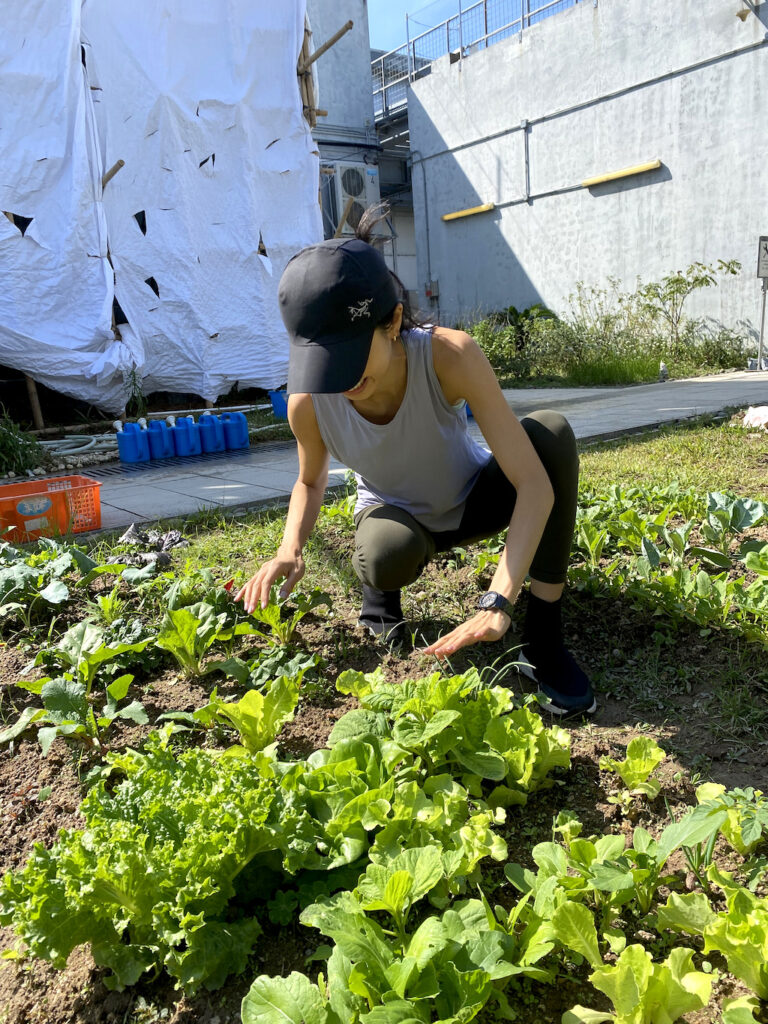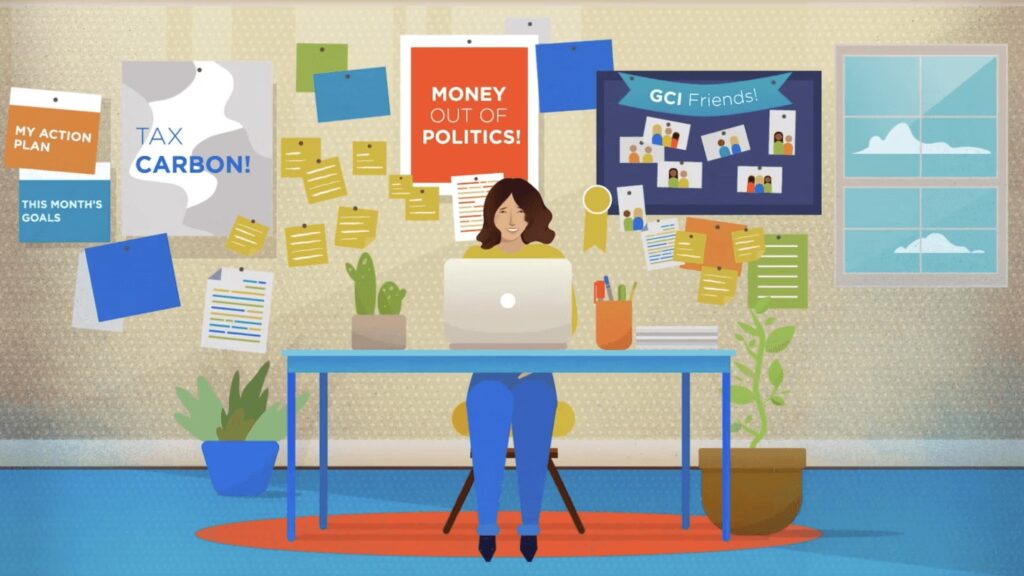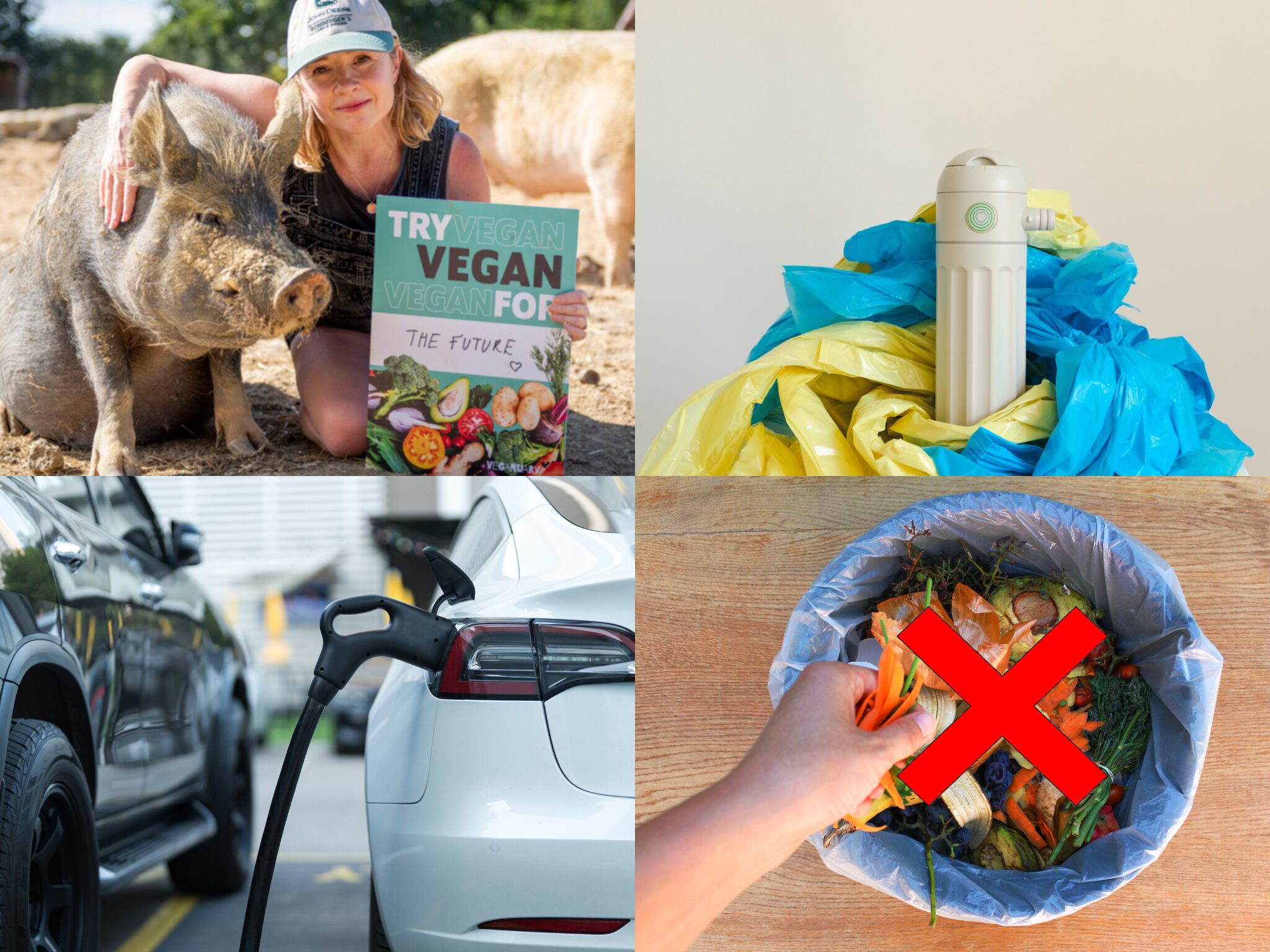Citizen Planet: 10 Things to Do for the Climate in 2024
8 Mins Read
If you’re looking for a New Year’s resolution, here are 10 things you can do in 2024 to curb your footprint and planetary impact and tackle climate change.
“We are heading for environmental disaster unless we change our habits quickly.“
A massive 80% of the 48,579 adults in 50 countries surveyed by Ipsos last year agreed with this statement. It was part of the market research company’s annual global trends report for 2023, published in February.
After a year where we saw floods in New York City, orange skies as a result of Canadian wildfires, food shortages across the world, and a climate conference that brought relief yet despair, it’s fair to say this sentiment will only grow stronger next year.
While it’s on our leaders to implement policy change, we as individuals also have a tremendous responsibility in the fight against the ecological crisis. Here are 10 things we can to help stop the effects of climate change in 2024.
1. Overhaul your wardrobe

Nope, you don’t need that top.
The fashion and textile industry is responsible for 10% of global carbon emissions, and its greenhouse gas emissions will surge by more than 50% by 2030 if current consumption rates continue. In 2022, a report by the Hot or Cool Institute explored the sector’s impact in G20 countries, suggesting that the biggest solution to lighten its impact on the Earth and stay below 1.5°C post-industrial temperature rises is to simply stop buying so many new clothes.
It recommended sticking to a five-piece rule, aimed at limiting new garment purchases to a maximum of five per year. Taking the example of the US, it explained how Americans buy more than 10 new items annually, but 80% are rarely worn. Buying five or fewer garments is four times more effective than the next best solution: reusing clothes.
Keep in mind these guidelines for building a sustainable wardrobe, and check out Tiffanie Darke’s newsletter, Rule of Five, for more tips and to join its five-piece pledge.
2. Do your laundry more sustainably
Our laundry is the biggest source of microplastic pollution, with washing machine residue making up 35% of the total. In a single wash, 700,000 microplastic fibres can be released into the drainage system. A different estimate suggests that each 5kg load of laundry leads to between 600,000 and 17 million microplastic fibres leaching into our waterways. Moreover, 75% of the plastic used in laundry pods enters the environment, while microplastics have been found in 119 popular detergents.
We can do much better. There are products like microfibre-absorbing laundry filters, and though their efficacy can vary greatly, fabric tech innovations to prevent shedding or catching microplastics at wastewater treatment plants aren’t viable solutions just yet. But that’s just one solution: check out our sustainable laundry guide for cleaner and greener clothes in 2024.
3. Quit plastic, packaging and excess waste

Plastics are an environmental nightmare, emitting 3.3% of global emissions across their life cycle (including production and disposal). They leak into the waterways, pollute global soil and the food system, and take centuries to break down.
Plastic is also everywhere. There are alternatives popping up (though not fast enough), but there are many things we can do to cut its use altogether, whether that’s through packaging, groceries, clothing, homewares, dining, or workspaces. And it’s imperative that we do: in 2019, annual production of plastic reached 460 million tonnes, and globally, only 9% of plastic actually gets recycled.
We’ve previously written an extensive list (with 85 tips) that can help you on your plastic reduction journey in your day-to-day life – adopt these in 2024 to bid adieu to plastic and say hello to a greener planet.
4. Consider an EV
Globally, transportation accounts for a fifth of all carbon emissions, 45% of which come from cars, buses and motorbikes. If you’re in a city with a reliable public transport network, that’s a great way to reduce your transport emissions. And once more, buying less is best – but if you are looking to get a new car, consider an electric vehicle (EVs).
More and more are popping up every year, at every price point – you can go for the chic and affordable, or the ultra-luxury. EVs can produce substantially less carbon than gas-powered cars, with estimates ranging from anywhere between 20% to as much as 83% fewer emissions. They’re not perfect, but still an upgrade on the conventional option.
If you’re grappling with the idea, the Washington Post has a guide made just for you.
5. Fly more responsibly

The aviation sector contributes to 4.4–5% of global GHG emissions, and 12% of total transportation emissions. Flying is a huge problem, and while many airlines are trying to develop sustainable aviation fuels, there are questions about their efficacy, viability and true impact.
The best thing here is to just fly less if you can, especially domestically. Choose the most sustainable carrier options – Google Flights can help you find the lowest-emissions itinerary. You can look into offsetting your flying emissions too, though doing your research is key here, as many offsetting programmes are all smoke and no fire.
When you do get to your destination, we have a handy guide to being an eco-friendly tourist.
6. Cut your food waste
Here’s a stat for you: the amount of food we waste per year – worth $1T – could feed a quarter of the world’s population. Let that sink in for a moment.
According to climate action non-profit Project Drawdown, reducing food waste is the single most impactful thing people can do to fight the climate crisis and lower personal GHG emissions. That’s because if food waste were a country, it would be the third-highest emitter on the planet.
There’s really no excuse for wasting food, and tons of things you can do to avoid doing so. Again, buying less and only as much as you need is the best way to start. But you can also use more of each produce – don’t throw out the peels, for example – support companies that upcycle waste, and properly compost whatever does need to be thrown away.
Within the kitchen, there are so many ways you can use up every part of a fruit or vegetable, or turn leftovers into new dishes. Our list of the best zero-waste cookbooks can help you become a more efficient, resourceful and creative cook, all the while cutting your food waste and lowering your climate impact.
7. Grow something

Food production accounts for a third of all GHG emissions, while transportation makes up 19% of the total food system’s emissions. Consider growing your own produce, starting a balcony garden, or volunteering on a farm, which would help you connect more with the food you eat.
Check out our takeaways from urban farming, which highlight the importance and joy of growing your own produce in the city. For an expert’s guide, plant-based chef Moises Mehl has a detailed two-part guide on everything you need to know about urban home gardening.
8. Reduce meat and diary
Of those food production emissions mentioned above, 60% come from meat. Overall, the animal agriculture industry is responsible for 11-19.5% of total GHG emissions. Studies have shown that veganism can slash emissions, water pollution and land use by 75%, while swapping just half of our meat and dairy intake with plant-based alternatives can halt deforestation and double climate benefits.
To help reduce the amount of meat and dairy in your diet in 2024, try Veganuary – you will find strength in the numbers here, with hundreds of thousands taking up the challenge alongside you. We have a list of apps and resources that will make your journey much smoother. Plus, there’s a wonderful piece from Grist’s Caroline Saunders on cooking with climate cookbooks to give you some more culinary inspiration.
9. Become a digital climate activist

As of September 2023, there were over 40 major climate protests worldwide – and these do bring about change, even if it’s slow progress. But if you don’t have the time or aren’t in the position to protest in person, you can still voice your opinion as a digital climate activist.
The internet holds a lot of power in this space, and has already transformed climate activism. Take an online course like the Game Changer Intensive by the Pachamama Alliance, where you will learn about your role in making a difference in this world, how climate change can truly be reversed, what’s required to reach that goal, and why social justice is key.
You can also volunteer your skills for climate work, as many executives, founders and employees of Fortune 500 companies do. Donating your free time to support crucial environmental action is a major way to make your mark.
10. Get educated about climate change
Among all these actions, perhaps the most meaningful way to go about things is to become better informed about climate change. Climate misinformation is rampant – you only need to look as far as the president of the UN climate conference claiming that a fossil fuel phaseout won’t help curb global warming.
A 2021 poll across four EU countries revealed that 53% of consumers can’t identify greenwashing claims on product packaging. Meanwhile, the meat and dairy industry is fuelling the misinformation wars on social media and using their power to censure public bodies and pressurise governments to use more favourable climate metrics.
It can be overwhelming and upsetting – but it’s crucial to look past the sea of misinformation and get educated about what’s really happening. For a wonderful resource, check out Earth.org’s list of the 25 best climate change books to read.




